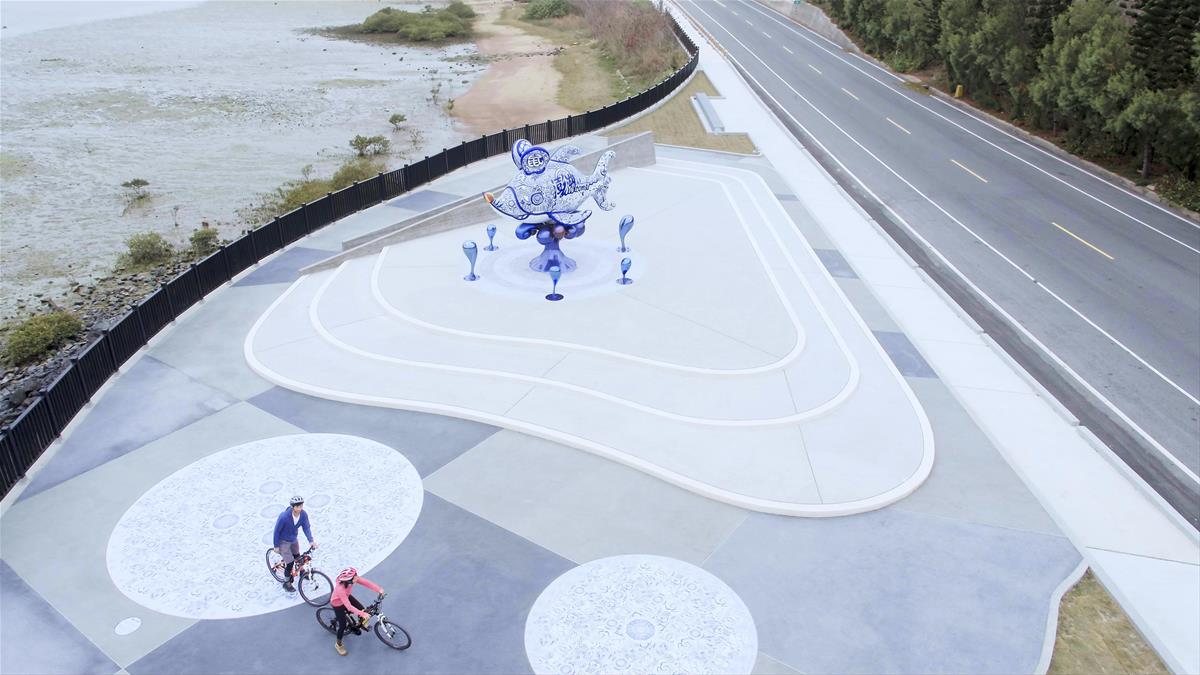Hi Mouse Landscape Art Introduction
In Penghu, the local pronunciation for dolphin is ‘hai-chu’, which also means 'a very good, high-quality place'. Therefore, the design starts with the themes of "dolphin" and "mouse," creating the playful and lively "Hi Mouse." Accompanied by bicycle tourism, Hi Mouse serves as one of the welcoming figures, with patterns that symbolize culture and characteristics, not only for tourists to admire but also to resonate with the local community. Its greatest feature is that it incorporates many elements and meanings that are loved by the Chinese, whether it is the blue-and-white porcelain design or the specifications and totem content, all of which are closely related to Eastern culture. Blue-and-white porcelain is a form of artistic expression filled with Eastern characteristics, and the blue also reflects the island scenery of Penghu, making it a popular photo spot for locals and visitors alike. The lively and playful Hi Mouse smiles joyfully under the sun, topped with colorful balls, exuding childlike joy; the design revolves around the number 8, which phonetically corresponds to the word "fa" (發) in Chinese, meaning prosperity. Additionally, the patterns encompass all the local characteristics of Penghu, which, although not large in size, boasts rich cultural and creative resources with features such as the Double Hearts Stone Weir, Green Sea Turtles, and lighthouses. Hi Mouse represents not only the local culture of Penghu but also plays an important role in promoting the local tourism industry.
 Hi Mouse Land Art
Hi Mouse Land Art
























